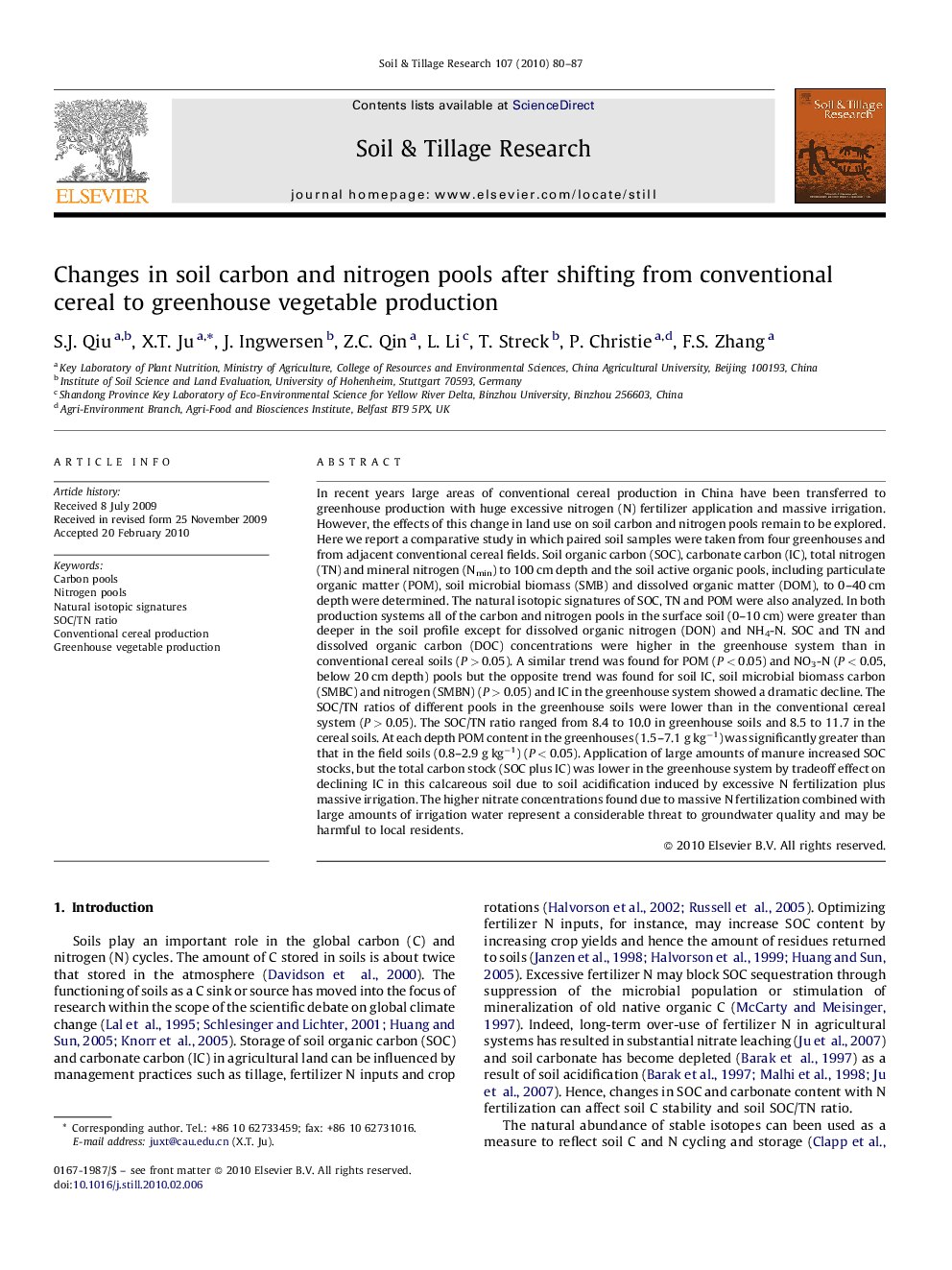| Article ID | Journal | Published Year | Pages | File Type |
|---|---|---|---|---|
| 306309 | Soil and Tillage Research | 2010 | 8 Pages |
In recent years large areas of conventional cereal production in China have been transferred to greenhouse production with huge excessive nitrogen (N) fertilizer application and massive irrigation. However, the effects of this change in land use on soil carbon and nitrogen pools remain to be explored. Here we report a comparative study in which paired soil samples were taken from four greenhouses and from adjacent conventional cereal fields. Soil organic carbon (SOC), carbonate carbon (IC), total nitrogen (TN) and mineral nitrogen (Nmin) to 100 cm depth and the soil active organic pools, including particulate organic matter (POM), soil microbial biomass (SMB) and dissolved organic matter (DOM), to 0–40 cm depth were determined. The natural isotopic signatures of SOC, TN and POM were also analyzed. In both production systems all of the carbon and nitrogen pools in the surface soil (0–10 cm) were greater than deeper in the soil profile except for dissolved organic nitrogen (DON) and NH4-N. SOC and TN and dissolved organic carbon (DOC) concentrations were higher in the greenhouse system than in conventional cereal soils (P > 0.05). A similar trend was found for POM (P < 0.05) and NO3-N (P < 0.05, below 20 cm depth) pools but the opposite trend was found for soil IC, soil microbial biomass carbon (SMBC) and nitrogen (SMBN) (P > 0.05) and IC in the greenhouse system showed a dramatic decline. The SOC/TN ratios of different pools in the greenhouse soils were lower than in the conventional cereal system (P > 0.05). The SOC/TN ratio ranged from 8.4 to 10.0 in greenhouse soils and 8.5 to 11.7 in the cereal soils. At each depth POM content in the greenhouses (1.5–7.1 g kg−1) was significantly greater than that in the field soils (0.8–2.9 g kg−1) (P < 0.05). Application of large amounts of manure increased SOC stocks, but the total carbon stock (SOC plus IC) was lower in the greenhouse system by tradeoff effect on declining IC in this calcareous soil due to soil acidification induced by excessive N fertilization plus massive irrigation. The higher nitrate concentrations found due to massive N fertilization combined with large amounts of irrigation water represent a considerable threat to groundwater quality and may be harmful to local residents.
